There are defined processes for managing projects, completing work, and delivering products or services to clients in every business. Due to the dynamic operating environment nowadays, companies need to establish structured work processes that are easily monitored, adaptable to emerging changes and open for continuous improvement.
That's why we rely on an Agile approach to our workflow with a focus on managing flow, gathering fast internal/external feedback, and visualizing work to track project progress easily.
Keep reading below to find out how you can lay the foundations of your Agile workflow too.
Introducing Agile Workflows
An Agile workflow represents the overall structure of a team’s process flow. It consists of all the stages that a product goes through – from the moment the idea was born through development to delivery.
Implementing an Agile workflow is inevitable when embracing the Agile mindset and promoting the Agile way of managing projects. The concept of Agile project management supports the idea of cyclical, iterative workflows where customers are actively involved in the product lifecycle through regular feedback exchanged. This allows Agile teams to respond promptly to their changing requirements by going back and applying the required alterations without having to start over everything from the very beginning.
Having the process flow visualized by using the right visual management board impacts team performance. Not only does the team have a transparent overview of the work process, but roadblocks become easily identifiable, team and cross-functional collaboration is enhanced, and the overall project’s efficiency improves.
It is worth noting that projects that require well-defined and structured processes would most likely not take the full capabilities of Agile workflows. The flexibility of Agile works best for projects that are easy to be modified due to the fluctuating business and client requirements.
What Are the Main Types of Agile Workflows?
Since Agile is no longer applicable to the software development branch only but is spreading its implementation across various types of projects and a range of industries, Agile teams have the opportunity to choose from a variety of Agile workflows. Among the most popular solutions are Scrum and Kanban workflows.
Let’s have a quick overview of each of them.
Scrum is an iterative method for product development and delivery. The main focus of this widely used framework is on self-organizing teams that release products faster to the market in repetitive cycles while emphasizing continuous improvement to address customer requirements. A typical Scrum workflow consists of the following phases:
- Product backlog
- Planning sprint
- Sprint backlog
- Sprint itself
- Scrum meetings
- Sprint reviews
 The concept of Scrum explained
The concept of Scrum explained
Kanban is the other highly popular method for workflow visualization and team collaboration. Unlike Scrum and other Agile solutions, Kanban is a less structured management method focusing on continuous flow rather than iterations. It aims to ensure a stable flow efficiency, identifying bottlenecks on time and getting things done continuously instead of starting new work all the time.
It is hard to say there is a default Kanban workflow structure, as every process is specific. However, the most basic Kanban board layout includes three main areas:
- Requested
- In progress
- Done
Of course, depending on your scenario, you can further divide each of these areas into sub-processes or steps in your workflow.
 Kanban board elements
Kanban board elements
Other solutions that are worth a mention include XP, Feature-driven development, Crystal, and Agile Unified Process (AUP).
Agile vs. Traditional Workflow: What Are the Differences?
To better understand what an Agile workflow is, let's first see how it differs from the conventional way of managing work processes.

Traditionally, work is managed in a sequential, linear way that consists of several different phases. No stage begins unless the previous one is completed. This is known as the "waterfall" approach to project management.
The main issue here comes when a change of requirements or a new request emerges. This is known as "scope creep" in traditional project management, and to fulfill the customers' requests, teams have to go through lengthy change control processes that can take forever. Once the change is approved, the team often needs to go back, undo, and then redo some of their work. This usually contributes to enormous project delays and high costs.
Often projects in a knowledge work environment require frequent changes because the result is rarely known from the beginning. That's why, to prevent the above from happening, the Agile approach to project management creates a workflow where the focus is on continuously delivering small pieces of work to the end customers and getting their feedback as fast as possible. This way, your team can adapt to emerging changes that inevitably occur in most knowledge work projects nowadays.

Furthermore, the Agile workflow process emphasizes increased visibility in the way work is managed. This allows you to spot problems early and fix them in a timely fashion. Combining this with the idea of reducing work batch sizes and delivering more frequently to the market, you will be able to create a value-based process that successfully meets customer’s demands.
To bring all of that to practice, first and foremost, you need to have a way to map your existing processes so you can open up optimization potential and look for improvements. For that, Agile teams use a model known as “Value Stream Mapping”.
How to Build an Agile Workflow Using Value Streams?
Agile process mapping, most commonly known as value stream mapping, is a Lean management process that allows you to visualize a product or service's development cycle from beginning to end. It helps you display all stages of your work process and your team's assignments.
With the end goal being to continuously provide value to the customers, through value stream mapping, you can see both the value-adding activities in your work process and those that generate waste.
Having such an overview, you can remove the wasteful ones in your process and make your workflow more efficient. Here, it is essential to note that not all activities that don't provide value are wasteful. That is because they might be of significance for ensuring the successful delivery of a product or service (ex. Quality Assurance).
Mapping the value stream of your team acts as a stepping stone to building an Agile process flow. It allows you to analyze your work process, visualize emerging priorities, spot issues, and react to them much faster. The idea is to lay the foundation and then gradually introduce feedback loops in your process, commitment points, Lean/ Agile metrics, etc., which will eventually make your workflow more agile.
What Benefits Does an Agile Workflow Bring to Your Process?
A great way to map the value stream of your work process and create a more flexible workflow is through an Agile management method such as Kanban and a proper Agile project management tool to fit your needs.
By applying it, you can bring more efficiency and agility to your workflow through:
- Transparency
- Adaptability
- Improved Team Collaboration
Let’s explore each one of them below in more detail.
1. Start Mapping Your Process to Elevate Transparency
Visibility is essential for Kanban, so one of the method's main benefits is a transparent work process, visualized on a Kanban board. Here you can also apply the value stream mapping technique in practice.
There, you should start small and keep the mapping process simple without overcomplicating things. In the beginning, you can divide your workflow into the three basic stages: "To Do" (work that needs to be done), "In Progress" (work is in motion), and "Done" (work is completed).
With time and depending on your own work processes, you should start adding the appropriate phases (and sub-phases) that reflect your tasks' flow.
 A simple Kanban board with a single workflow
A simple Kanban board with a single workflow
This allows you to track the work as it matures, see where it slows down and what might be blocking it from moving downstream. Having this in mind, you can take the necessary actions to make the entrance and departure of tasks in and out of your system as smooth as possible.
Visualizing your workflow is essential when managing knowledge work projects. As the final output is often intangible, it gives you a fast way to bring issues and defects to the surface. In turn, this increases the operational agility of your workflow as teams become capable of quickly rearranging and reorganizing their flow of tasks for higher efficiency whenever necessary.
2. Gradually Develop Your Board to Adapt to Your Needs
Another one of the core principles of Kanban states, "Start with what you do now". In other words, instead of pursuing revolutionary changes to your current work process, you should respect it and then gradually evolve it.
If you think about it, this brings more flexibility to your workflow because you are not disrupting your existing process right off the bat. Instead, you are applying small improvements to it one at a time. This way, you will have more freedom to tailor your process based on Kanban's best practices, including your specific way of executing projects.
Furthermore, Kanban makes your team more responsive to a changing environment. As the work is visualized, customer communication becomes more transparent too. Through the use of shared boards and backlogs and Kanban cards, for example, customers can see what you plan on doing next. This allows you to communicate the definition of done with them easily and, as a result, quickly adapt to any necessary changes or requirements that may emerge alongside the development cycle.
With the introduction of commitment points, you can also better respond to customer expectations. For example, on the Kanban board, you can have work stages such as "Ready to Start" and "Ready for Delivery" ("Ready To Deploy" in the image below) that reflect the readiness of your team to both start working on a single task and deliver it for customer examination.
 Kanban board with two commitment points
Kanban board with two commitment points
Once a work item is committed for execution, this is the point in the process where we might not have exact details as to when it will be delivered. However, as the work item gets closer to the delivery commitment point, your team will be more likely to communicate a specific due date with your customers instead of doing that from the beginning. As a result, you will have a way to lower the risk of delay, set more realistic customer expectations, and then be able to satisfy them.
10 Years Kanban Experience In 1 Free Book.
Project Manager's Guide to Kanban
3. Define Your Workflow Policies to Improve Team Collaboration
A significant Kanban benefit that contributes to a more agile process flow is the improvement in team collaboration.
With all tasks and their current status visualized on a Kanban board, team members will see what each one of their colleagues is working on. This contributes to reducing chaos, keeps everyone on the same page, and eventually accelerates the flow of tasks through your work system.
Furthermore, with the Kanban board's help, you can clearly define your process policies (i.e., make it explicit). All you have to do in practice is to input short descriptions of what should happen in each work phase. This way, team members will have a shared understanding of the specifics of each process step.
 Explicit Policies
Explicit Policies
In general, the Kanban system allows more freedom and gives team members the ability to map and control their workflow. Unlike the typical push approach in traditional project management, where the "boss" assigns work, team members pull their tasks in Kanban.
This instills a sense of ownership and encourages discussions between them on how to get work done. Through those conversations, they will be more likely to collaboratively discover problems within the workflow, figure out how to deal with them, and eventually improve the entire work process.
Embracing Continuous Improvement for a Smooth Agile Process Flow
Making your work processes better and better with time will allow you to achieve true agility, adapt to emerging changes quicker, and deliver superior value to your customers.
The best practice for embracing continuous improvement in an Agile environment is to run regular experiments and implement frequent feedback loops/learning cycles.
Continuous Experimentation
When talking about continuous experimentation, we should mention Demming and his PDCA cycle, which involves four steps:

Basically, in case there is an issue inside your workflow that might be leading to delays in projects, unsatisfied customers, etc., you should:
- Identify the problem (Plan),
- Test a potential solution (Do)
- Measure the results (Check)
- Implement that solution if it’s successful (Act).
We should mention here that this model is not reserved only for problems and issues. This Agile best practice is to regularly reflect on your process and look to identify opportunities for improvement. Once that's done, you can run small experiments to determine whether making any changes is worthwhile.
To implement continuous experimentation and the PDCA cycle in reality, you can use the Kanban board again. Let's take a short example of this article's development and how we approach it in our company.
To complete it, we have a dedicated workflow called "Content Production". There, the development of this content piece goes through several different steps (columns) on the Kanban board before it reaches its final state. However, what if we found that lately, we are systematically inefficient when producing content?
In that case, we would first identify the problem and then start testing a potential solution as an experiment. To do that, we have a dedicated column (work stage) on our Kanban board called "Experiment In Progress". It is important to note that this is not a separate work stage in our process because we are not actively delivering value in it. Instead, we define it as a "queue" stage and use it to track any experiments to improve our workflow.
 Tracking experiments on a Kanban board
Tracking experiments on a Kanban board
Our next steps would be to measure the results and determine if the experiment was successful. This continuously improves our workflow, making it more responsive to emerging issues and keeping it Agile.
How to Analyze Your Agile Workflow Efficiency?
Frequent feedback loops are an integral part of Agile project management. They represent meetings as some act as reflection points, where team members analyze the process and discuss potential improvements.
In Kanban, such a reflection point in our process is the Service Delivery Review. There, we discuss everything that has transpired on our Kanban board since the last meeting and measure our work processes' efficiency with a variety of agile flow charts and diagrams. In reality, we are frequent users specifically of the Cumulative flow diagram, which helps us track how our work items flow from concept to fruition.
 Example of a Cumulative Flow Diagram
Example of a Cumulative Flow Diagram
As a result, we are equipped with the tools to measure the stability of our service delivery process and quickly take preventive instead of corrective actions whenever necessary. This approach continuously refines our workflow and enables us to deliver the best possible solutions to our customers frequently.
Agile Workflow Frequently Asked Questions (FAQ):
What Is an Agile Workflow?
An Agile workflow is a visual representation of a process flow structure. It goes through the entire project’s lifecycle by mapping the existing process’s steps. To create a smooth, Agile flow, teams need the help of an Agile management method such as Kanban, which will allow them to bring more agility and efficiency to their workflow through transparency, adaptability, and better team collaboration.
What Is the Agile Workflow Lifecycle?
An Agile software development lifecycle covers all stages of a process flow required for a project to be considered complete. The lifecycle is usually divided into 5 stages determining the project's status - concept, inception, iteration, release, and retirement. Oftentimes, it is common for another 6th stage to be present between the release and retirement stages, and that is maintenance (or production). At this stage, a product demo is provided to ensure a successful launch to the customer.
What Are the 5 Phases of Agile?
The workflow breakdown of an Agile software development project comprises 5 phases: ideation (or conception), inception, iteration, release, and retirement. Each phase goes through the entire project lifecycle, which includes defining the project’s scope, work being distributed among teams, tested and launched, a project being ready for delivery, and ending up with its completion.
What Is the Difference between Traditional and Agile Workflows?
Traditional process workflow follows the linear, sequential approach where each step is tightly connected to the one before. This means that one stage of the process cannot be started until the previous one is completed. This type of workflow is common for traditional PM, where responding to a customer requirement on time is not typical, and it takes time, project delays, and going back and forth through the process.
In contrast, the Agile workflow structure is iterative, focusing on delivering smaller batches of work while collecting instant customer feedback. As a result, Agile teams can resolve issues quickly and adapt to the changing working environment.
We offer the most flexible software platform
for outcome-driven enterprise agility.
In Summary
Building an Agile workflow enables you to adapt to emerging changes and ensure successful project delivery to the market. To create a smooth, Agile flow, you need to first map your existing processes and then look to continuously improve them.
This can be done with the help of an Agile management method such as Kanban. Implementing it will allow you to bring more agility and efficiency to your workflow through:
- Transparency
- Adaptability
- Better Team Collaboration





 The concept of Scrum explained
The concept of Scrum explained Kanban board elements
Kanban board elements
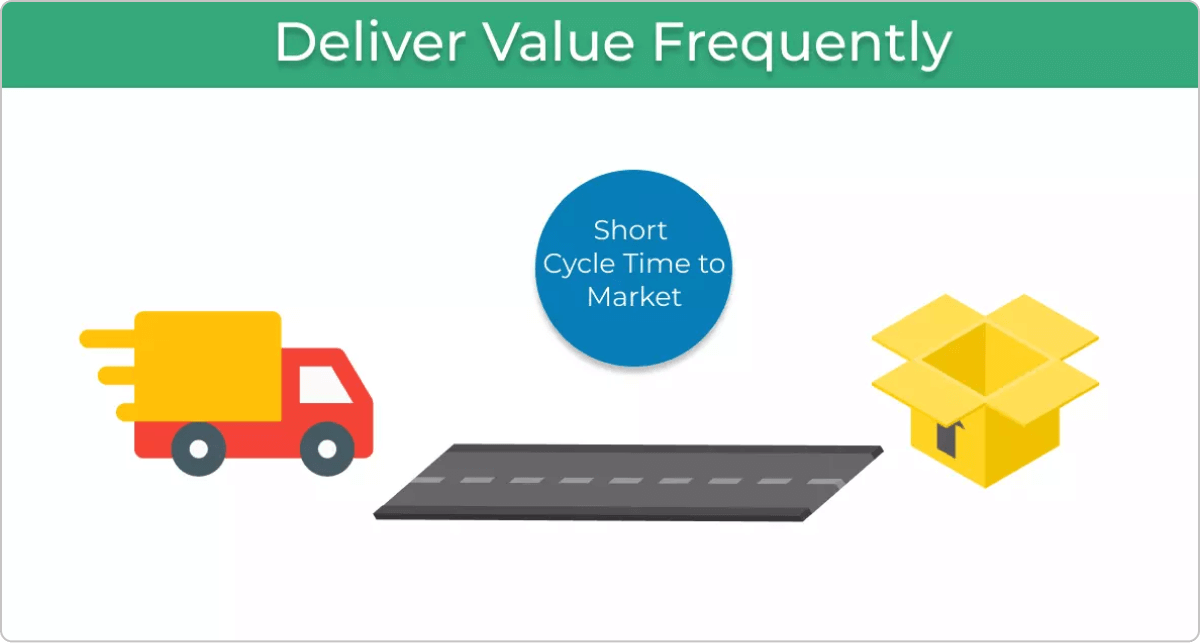
 A simple Kanban board with a single workflow
A simple Kanban board with a single workflow Kanban board with two commitment points
Kanban board with two commitment points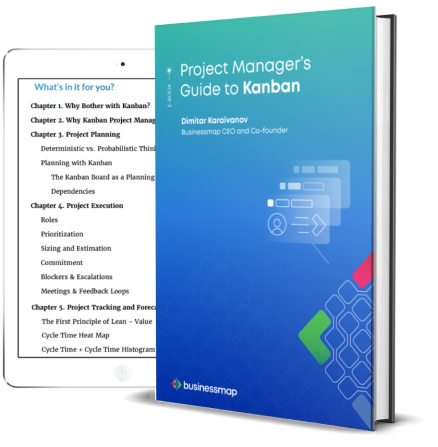
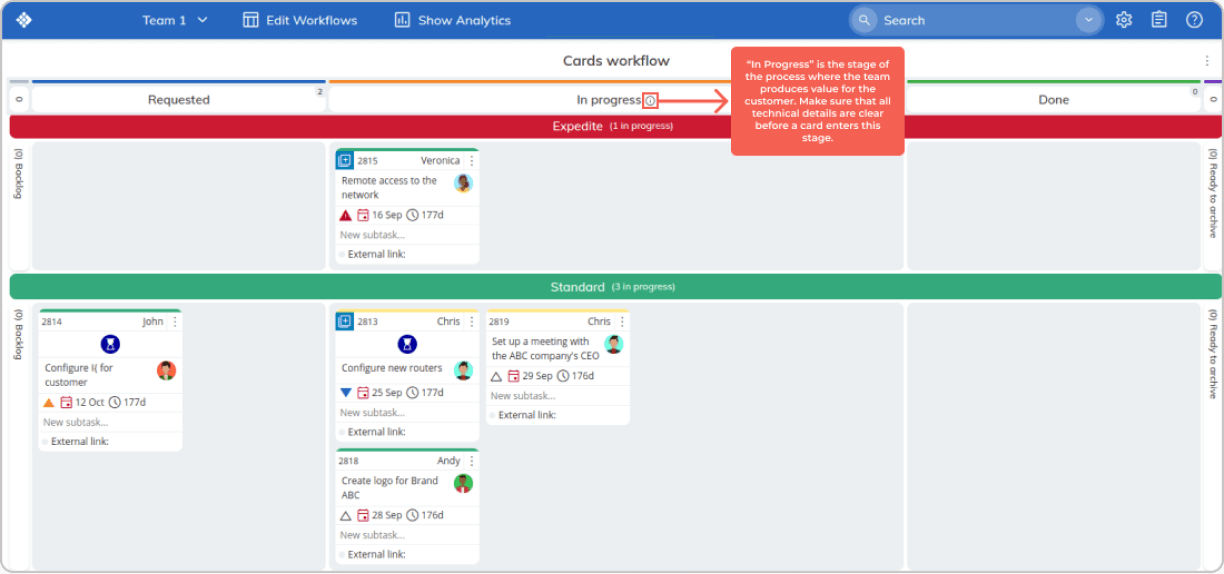 Explicit Policies
Explicit Policies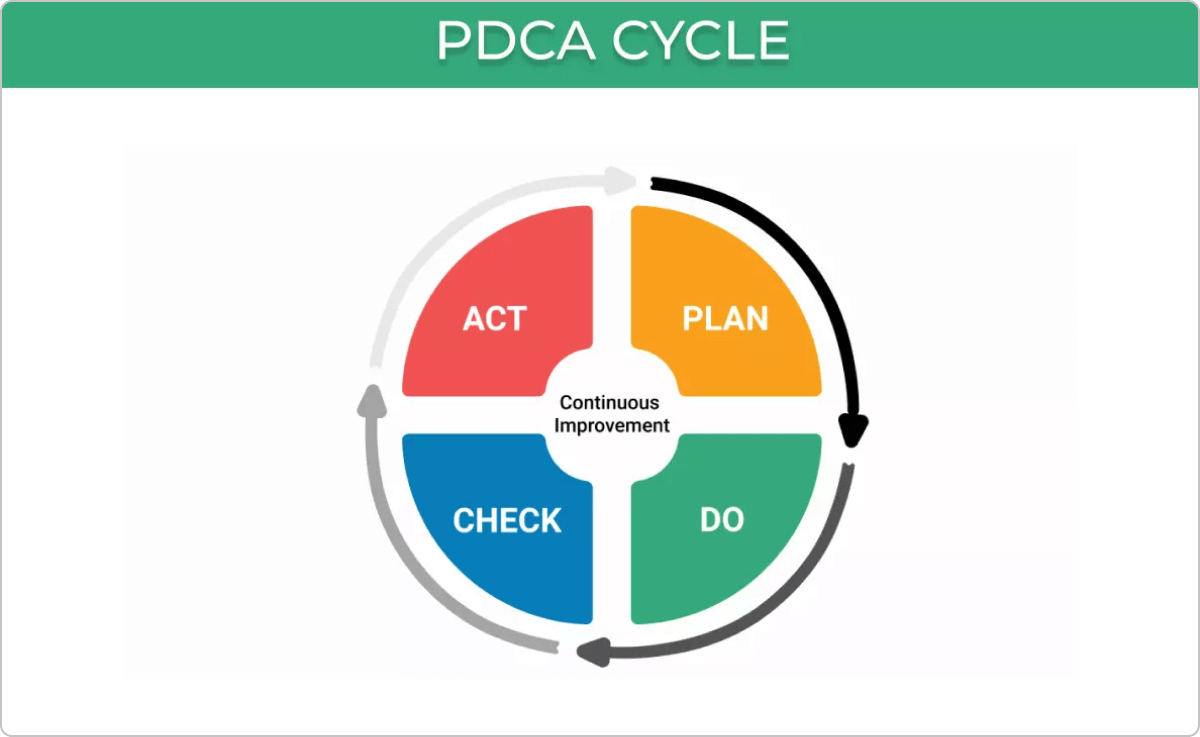
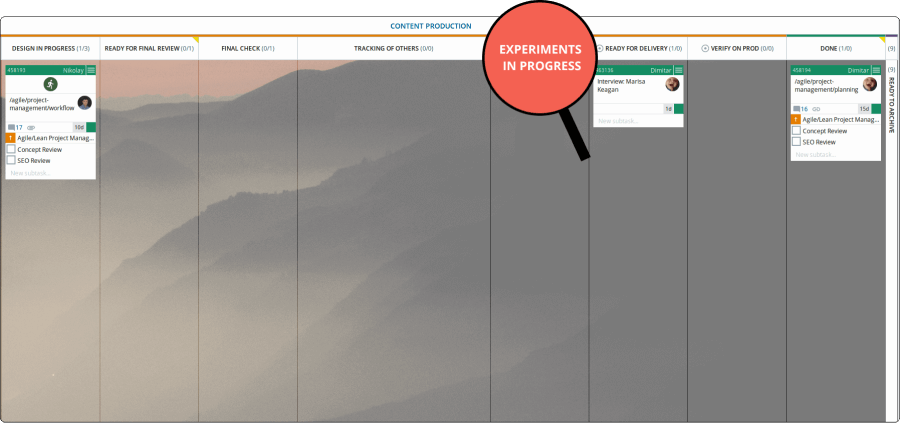 Tracking experiments on a Kanban board
Tracking experiments on a Kanban board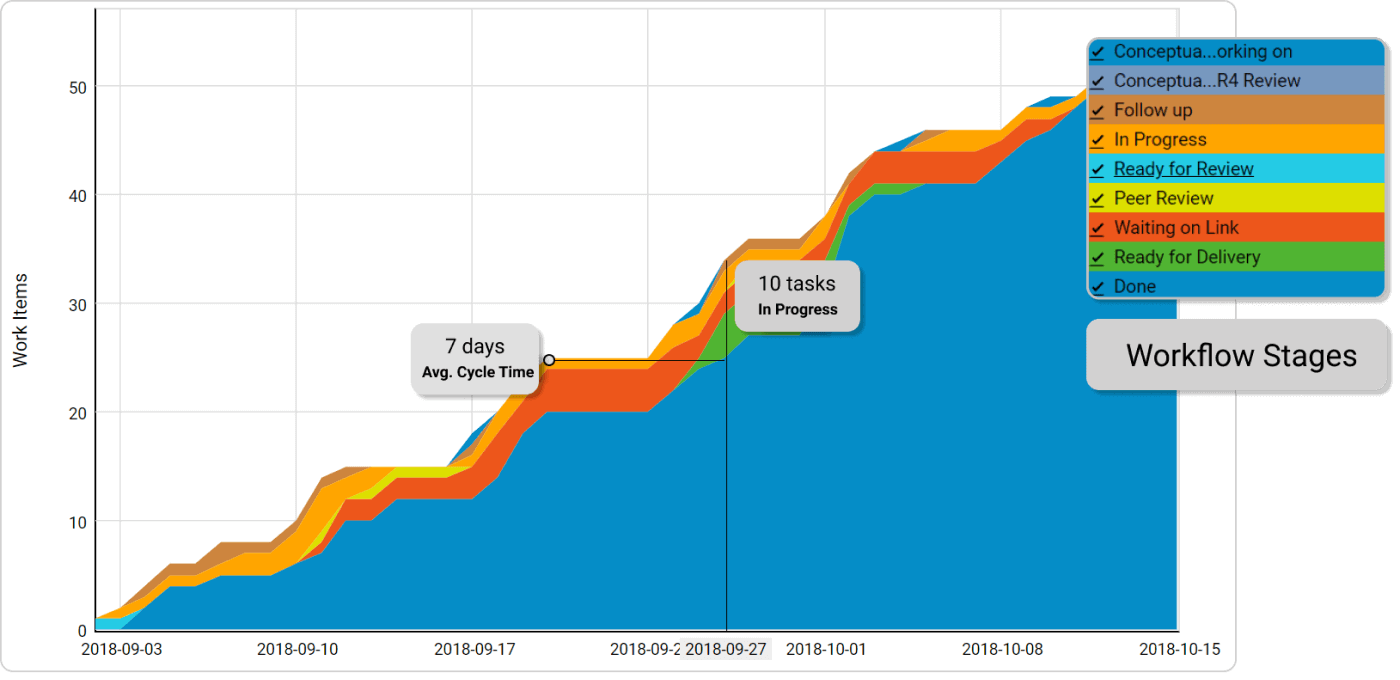 Example of a Cumulative Flow Diagram
Example of a Cumulative Flow Diagram

